
1928 International Press Exhibition Encased Gluckspfennig
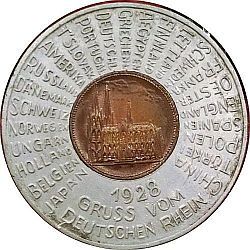
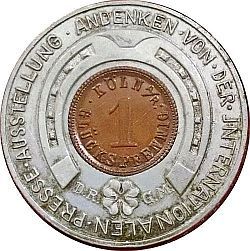
Encased Koln Copper Gluckspfennig - Souvenir of 1928 International Press Exhibition in Cologne (Images Courtesy of Mark Hotz)
This encased is interesting in that it contains a 1928 gluckspfennig (good luck penny). It is larger that the usual encased coin. The side with the cathedral is the obverse.
The cathedral is Hohe Domkirche Sankt Petrus, which translates to Cathedral Church of Saint Peter
. The construction of the Cologne cathedral was started in 1248, halted in
1473 and finally completed to is's original Medieval plan in 1880. It is the largest Gothic church in northern Europe and has the second tallest twin spires. On the
obverse are the names of 24 countries who exhibited. China, Tûrckei, Polen, Spaine, Oester., Franke., Schweden, Lettland, Finnland, Aegypten, Griechenl., Deutschl., Portugal,
T'Slovak.,Amerika, Russland, Dänemark, Schweiz, Norwegen, Ungarn, Holland, Belgien, and Japan. Note that several countries were abbreviated (note period after
Deutschl"." -abbreviation for Deuschland). I find the spellings of the countries to be interesting. Ungarn? Hungary? Oester. could be Oesterland a region of Germany.
The phrase 1928 Gruss Vom Deutschen Rhein, which appears lower center on the obverse, literally translates as "Greetings from the German Rhine"
On the reverse (the denomination side) we find, Andenken Von Der Internationalen Presse Ausstellung , which Google translates as Souvenirs From The International Press Exhibition. Around the four leaf clover on the left D.R. and G.M. initials. Oon the right D.R. could be Deutsch Republic.
The 1928 international press exhibition took place from May 10, 1928 until October 15, 1928. There were twenty exhibits including one from the United States. The exhibition depicted techniques of news gathering through transmission. The American Exhibit encompassed approximately 100,000 square feet of space. In the exhibit were information on daily newspapers, periodicals, graphic design,book printing art, technical installations, presses and other printing equipment.
"The International Press Exhibition in Colonge, entitled Pressa for short, is certainly the greatest exhibition since the end of the war."(WWI) " Its extent for three kilometers along the banks of the Rhine has even rendered it necessary to build a miniature railway, in order that visitors may conquer the distance between individual halls without exhausting themselves."₁
"The aim of the international Pressa exhibition was to give the world a picture of the cultural and economic meaning of the press, to grasp the life of the press in all its manifestations and total sphere of influence, in its living connections with culture and business and with political and social events. Therefore, the task was far beyond making an exhibition just for trade people. It should be a show for everyone. The attempt was to step back from the newspaper and magazine as a product, to the presentation of their meaning in the life of the population." (Dr. Ernst Esch in Amtlicher Katalog Colonge 1928)₁
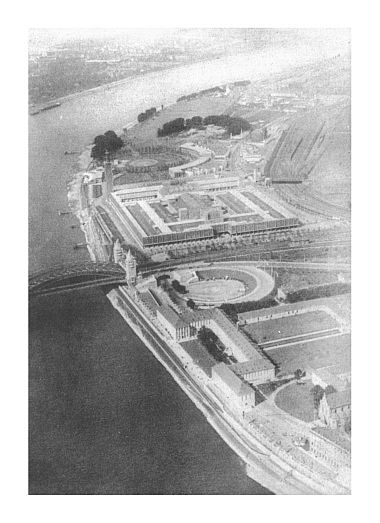
Aerial view Overhead view of the grounds of the 1928 Pressa International Exhibit in Colonge Germany.
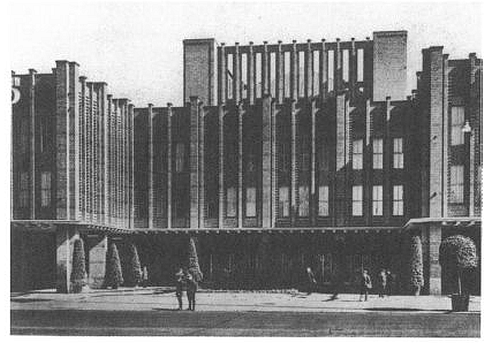
The main entrance to Pressa.
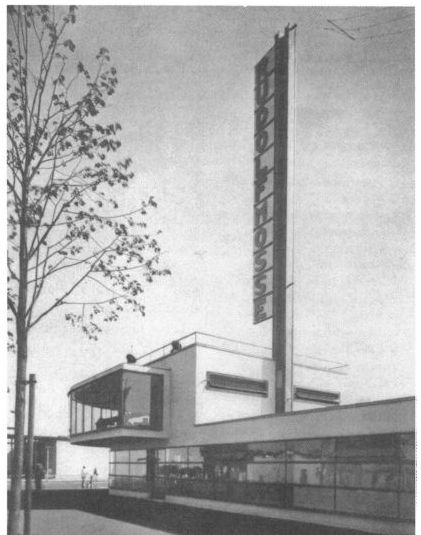
Pavillion designed by Berlin architect Eric Mendelsohn for publisher Rudolf Mosse.
Bibliography:
1. Anysley, Jeremy. Pressa Cologne, 1928: Exhibitions and Publication Design in the Weimar Period.
Design Issues 10, no. 3 (1994): 53-76. doi:10.2307/1511692. (Photos and text excerpted from this article)
Home | Articles | Varieties | Coin Links | About | Terms of Use
Site Copyright 1999-2021 by Bruce Perdue Email: Webmaster All Rights Reserved ©Copyright Bruce Perdue